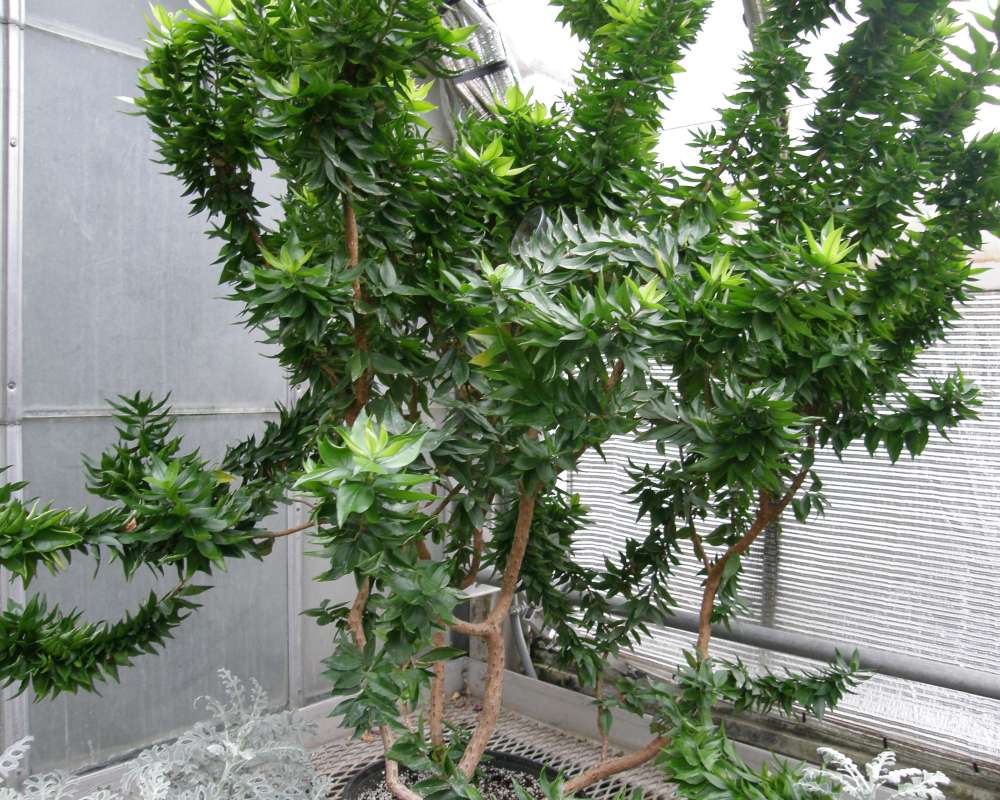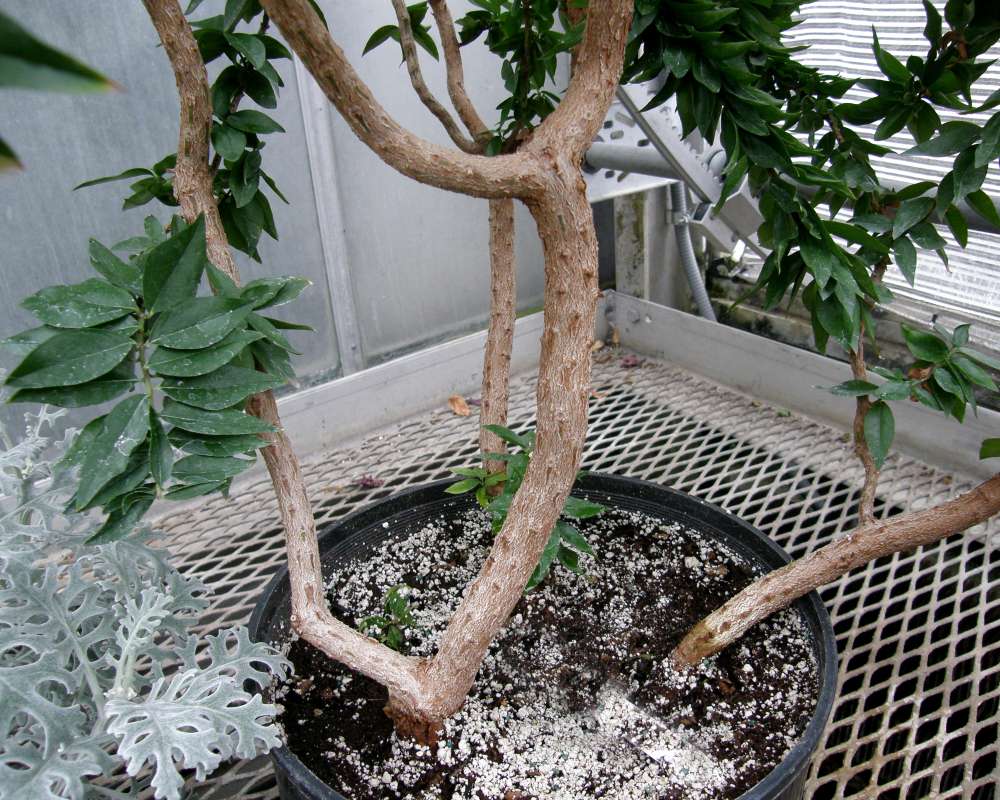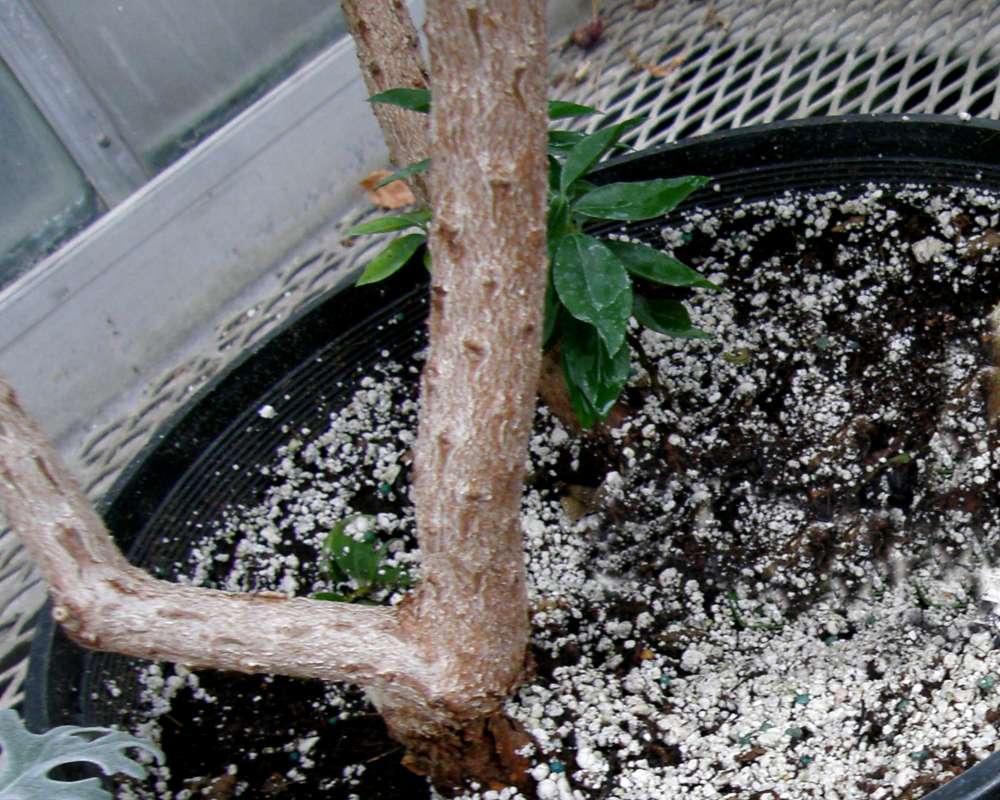SPECIES INFO
True myrtle (Myrtus communis) is found naturally in southwestern Europe and also the area around the Mediterranean Sea. This shrub has many branches and can reach about 10-16 feet in height. The oval somewhat lanceolate leaves are small, usually less than 2 inches in length. The flowers are white or pinkish white. The small almost round berries are dark usually blue or reddish black.
This shrub has been cultivated since ancient times, and botanists are not sure of the original range of this species. This is not listed in Kartesz as an established species in North America, but we suspect it might be established in several places. There are numerous named varieties.The sweet gale family (Myricaceae) contains an assortment of aromatic trees and shrubs. There is a single genus, Myrica, with about 40-50 species, but some authors raise the sub-genera to full genus level. Kartesz shows Comptonia peregrina and 9 species and 1 hybrid in the genus Myrica as occurring in greater North America.
Members of this family have alternate leaves usually with a short petiole (leaf stem). Flowers are normally in a dense axillary spike. The fruit is a drupe (fleshy fruit with a single seed enclosed in a hardened shell). European species have been used for food flavors and for dye.
The Myricales order contains a single family. Most members of this order are temperate or subtropical. Many species are evergreen.
Dicots (Dicotyledoneae Class) are the predominant group of vascular plants on earth. With the exception of the grasses (Monocots) and the Conifers (Gymnosperms), most of the larger plants that one encounters are Dicots. Dicots are characterized by having a seed with two outer shell coverings.
Some of the more primitive Dicots are the typical hardwood trees (oaks, birches, hickories, etc). The more advanced Dicots include many of the Composite (Aster) Family flowers like the Dandelion, Aster, Thistles, and Sunflowers. Although many Monocots reach a very high degree of specialization, most botanists feel that the Dicots represent the most advanced group of plants.
Seed plants (Phylum Embryophyta) are generally grouped into one large phylum containing three major classes: the Gymnosperms, the Monocots, and the Dicots. (Some scientists separate the Gymnosperms into a separate phylum and refer to the remaining plants as flowering plants or Angiospermae.)
For North American counts of the number of species in each genus and family, the primary reference has been John T. Kartesz, author of A Synonymized Checklist of the Vascular Flora of the United States, Canada, and Greenland (1994). The geographical scope of his lists include, as part of greater North America, Hawaii, Alaska, Greenland, Puerto Rico, and the Virgin Islands.
Kartesz lists 21,757 species of vascular plants comprising the ferns, gymnosperms and flowering plants as being found in greater North America (including Alaska, Hawaii, Greenland, Puerto Rico and the Virgin Islands.
There are estimates within the scientific world that about half of the listed North American seed plants were originally native with the balance being comprised of Eurasian and tropical plants that have become established.
Plant kingdom contains a large variety of different organisms including mosses, ferns, and seed plants. Most plants manufacture their energy from sunlight and water. Identification of many species is difficult in that most individual plants have characteristics that have variables based on soil moisture, soil chemistry, and sunlight.
Because of the difficulty in learning and identifying different plant groups, specialists have emerged that study only a limited group of plants. These specialists revise the taxonomy and give us detailed descriptions and ranges of the various species. Their results are published in technical journals and written with highly specialized words that apply to a specific group.
On the other hand, there are the nature publishers. These people and companies undertake the challenging task of trying to provide easy to use pictures and descriptions to identify those species.




